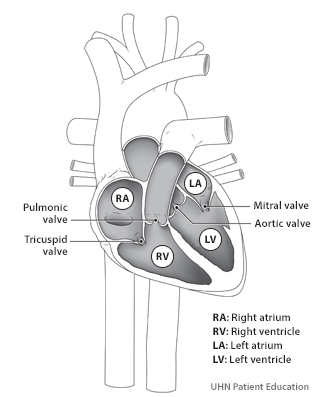
Diagram of the valves in the human heart
What Do Heart Valves Do?
The valves in the heart act like plumbing valves and prevent backflow of blood. This allows blood to flow in one direction between the different chambers of the heart.
There are four major valves in the heart:
- mitral valve
- aortic valve
- tricuspid valve
- pulmonary valve
What Are The Different Types of Heart Valve Disorders?
-
Stenosis or narrowing of the valve. This disease of the valve prevents it from opening and closing.
-
Prolapse (faulty valve). The flaps do not close smoothly or evenly.
-
Regurgitation of the valve occurs when the valve does not close securely, allowing the blood to flow backwards into the heart.
What Are The Signs of Heart Valve Disorders?
Valve disorders may cause:
- shortness of breath (main symptom)
- chest discomfort
- palpitations
When To Call Your Doctor
If you have fainting or almost-fainting episodes, see your doctor immediately. You should have follow-up visits with your doctor or cardiologist on a regular basis.
How are Heart Valve Disorders Treated?
Treatment for a heart valve disorder depends on how serious your condition is. Some people will not need any treatment, some may need medicine, while others will require a surgery or procedure to repair or replace the valve.
Learn about procedures to repair and replace heart valves »
